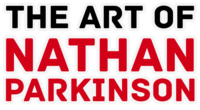For an artist composition is debatably the most important skill to learn and employ in one’s craft. I have compiled a list of resources I’ve found helpful in learning this skill.
WARNING: there is a lot of contradicting information about composition available online. As Glenn Vilpuu says, Nathan Fowkes emphasizes, and the Draftsmen echo,
“There are no rules, just tools.” – Glenn Vilpuu
I’ve tried to list the sources in rough order of what made the biggest impact/impression on me. I’ve not watched every video here, but I am familiar with each artist enough to recommend them. Remember, too much head knowledge without application isn’t usually healthy (in any area of learning). Try to put what you learn into practice as soon as possible before taking in more information.
Free Internet Resources
Nathan Fowkes
Nathan Fowkes has some free content about composition on YouTube, but his most valuable offering is his paid course on Schoolism.
The Draftsmen Podcast
The Draftsmen podcast/channel on YouTube has at least one episode dedicated to composition; Marshall Vandruff is very knowledgeable about composition and often has great advice to contribute; Stan Prokopenko has good advice, but Marshall has more life experience; they have rather different backgrounds as artists and each offer a valuable perspective; they balance each other nicely.
Bill Perkins
Glenn Vilpuu (and Michael Spooner)
Glenn Vilpuu spews artistic wisdom constantly; he’s a great figure-drawing instructor; just be aware that as a classically trained artist, he works a lot from nude models.
James Gurney
Feng Zhu
Feng Zhu on composition (Feng has tons of free, valuable drawing instruction)
Trent Kaniuga
Alphonso Dunn
Kim Jung Gi
WARNING: Kim Jung Gi frequently draws extremely inappropriate content; so I don’t endorse all his stuff, but man is he ever good. He gives a bit of drawing advice and instruction, but one can learn much from watching him draw; I find his skill inspiring and something to aim for. The following content is safe.
Aaron Blaise
While I don’t find Aaron Blaise‘s composition advice to be very strong/helpful, he’s got a lot of other great art advice, especially when it comes to drawing animals; I will say though, that he composes very well intuitively through decades of creating on a highly professional level; I just don’t find that he communicates too strongly in the area of composition.
More Resources
Paid Internet Resources
Art Inspiration
Final Thoughts
A useful exercise is to try to break down other people’s compositions as studies; just do little 1×2 inch thumbnail copies (or go up to 3.5×5 inches); try to study how they structure the values (i.e. scale from light to dark) and the colours. What kinds of contrast do they use? How do they focus/move the viewer’s eye? etc.
A simple YouTube search for “art composition” by itself or with an artist’s name will yield many useful results. These are some of the most influential resources I could recall from several years of drawing. I know it’s a ton of information; please don’t go crazy and burn out; just pick one resource to start (whatever catches your eye) and spend some time on it; pace yourself. Don’t try to consume this waterfall as fast as possible, but do drink deeply to your satisfaction. I’d recommend visiting this list from time to time when you’re wanting to up your composition game. Composition obviously isn’t all there is to know about art, but it’s a really valuable skill, and as Nathan Fowkes’ says, possibly the most important skill an artist can possess.








